Etruscan Beautiful Bronze Lamp of Cortona – Studied
Conny Waters - AncientPages.com - Archaeologists have recently focused their study on a beautiful artifact dated to the ancient Etruscan civilization that inhabited Etruria in ancient Italy.
Underside of the bronze lamp of Cortona. Museo dell’Accademia Etrusca e della Città di Cortona (MAEC henceforth), Cortona. Published with the permission of MAEC. (Photo: MAEC webpage, edited by R. Alburz)
This artifact is a large, intricately designed bronze hanging lamp that might have been part of rituals paying homage to the Greek god Dionysus, but it took long time to come up with this conclusion.
The researchers wrote in their paper that the Cortona lamp has a “diameter of 60 cm and weighs 57.72 kg. It was found on 14 September 1840 in an isolated ditch, approximately 2.8 km to the west of Cortona at località La Fratta in central Etruria on land owned by the Cortonese noblewoman Luisa Bartolozzi Tommasi.
The lamp was recovered together with a damaged and inscribed bronze plaque.
For nearly two centuries, many researchers have worked tirelessly to unravel the intricate symbolism of this Etruscan artifact.
For many years it was believed that these figures symbolized the Greek river god Acheloos, usually considered the father of the famous sirens.
The Etruscan lamp of Cortona. Credit: Museo dell'Accademia Etrusca e della città di Cortona
After a comprehensive analysis of literary materials and visual proofs, the researchers concluded that the lamp's decorations probably represent the "thiasos" – a group of devotees associated with Dionysus, the god of wine and festivity.
After thoroughly analyzing literary materials and visual proofs, the team - Ronak Alburz, Ph.D. student and Associate Professor Gijs Willem Tol of the University of Melbourne, Australia, concluded that the lamp's adornments probably represent the "thiasos" – a group of devotees (often dancers, singers) and other followers associated with Dionysus.
The Cortona lamp also contains cosmic symbolism, which has been observed but not fully understood by earlier researchers.
Dionysos and his thiasus. Upper tier of an Attic black-figure krater-psykter. Credit line: 1998 purchaded. Musée du Louvre - Public Domain
Therefore, the recent analysis of the artifact represents a visible depiction of the mysteries' cosmos. The lamp dated to the Late Archaic period (ca. 480 BCE) is a representation of the mysterious cosmos, featuring Dionysus, the sun god, in each of the sixteen segments of the Etruscan sky. It symbolizes the god’s journey through the alternate universe's outermost region.
The Cortona lamp was likely linked to the secretive Dionysus cult. The lamp's design portrays a Dionysian thiasus, possibly participating in a ritualistic act within the mystical universe in honor of Dionysus, according Alburz, the lead author of the study.
Paper: “A Re-Evaluation of the Iconography of the Etruscan Bronze Lamp of Cortona” Etruscan and Italic Studies, 2024. doi.org/10.1515/etst-2023-0019
Written by Conny Waters - AncientPages.com Staff Writer
More From Ancient Pages
-
 The Kitchen God In Ancient Vietnamese Tradition Is Still Alive
Featured Stories | Feb 23, 2016
The Kitchen God In Ancient Vietnamese Tradition Is Still Alive
Featured Stories | Feb 23, 2016 -
 Clurichaun – Little Naughty And Drunken Fellow Akin To Leprechaun In Irish Folklore
Featured Stories | Sep 13, 2019
Clurichaun – Little Naughty And Drunken Fellow Akin To Leprechaun In Irish Folklore
Featured Stories | Sep 13, 2019 -
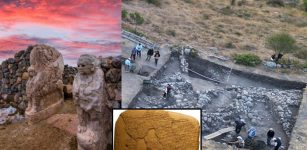 Cuneiform Tablet With New Indo-European Language Discovered In The Capital Of The Hittites
Archaeology | Sep 21, 2023
Cuneiform Tablet With New Indo-European Language Discovered In The Capital Of The Hittites
Archaeology | Sep 21, 2023 -
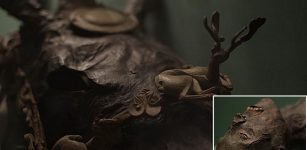 Earliest And Largest Scythian Princely Tomb Discovered In Siberia By Swiss Archaeologist
Archaeology | Jan 16, 2018
Earliest And Largest Scythian Princely Tomb Discovered In Siberia By Swiss Archaeologist
Archaeology | Jan 16, 2018 -
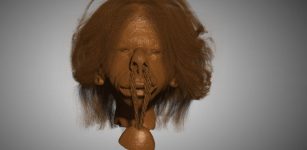 Researchers Confirm Museum Shrunken Head As Human Remains
Archaeology | Aug 4, 2022
Researchers Confirm Museum Shrunken Head As Human Remains
Archaeology | Aug 4, 2022 -
 How Did Native American Indian Chiefs Get Their Names?
Ancient History Facts | May 27, 2016
How Did Native American Indian Chiefs Get Their Names?
Ancient History Facts | May 27, 2016 -
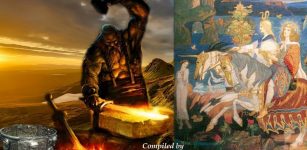 Goibniu: The Sword Smith Of Tuatha De Danann Who Forged Weapons For Battles In Celtic Mythology
Celtic Mythology | Jan 31, 2020
Goibniu: The Sword Smith Of Tuatha De Danann Who Forged Weapons For Battles In Celtic Mythology
Celtic Mythology | Jan 31, 2020 -
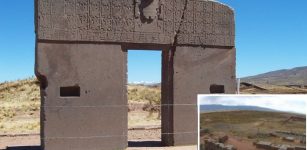 Underground City And Pyramid Discovered At Tiahuanaco, Bolivia
Archaeology | Aug 3, 2018
Underground City And Pyramid Discovered At Tiahuanaco, Bolivia
Archaeology | Aug 3, 2018 -
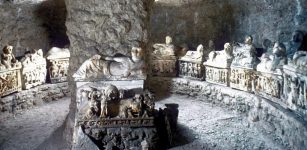 Image Of The Day: The Inghirami Tomb At Volterra, Italy
Image Of The Day | Sep 9, 2015
Image Of The Day: The Inghirami Tomb At Volterra, Italy
Image Of The Day | Sep 9, 2015 -
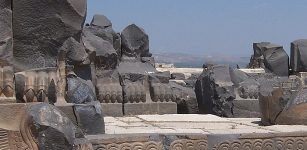 Unsolved Mystery Of The Giant Footprints Outside The Ain Dara Temple
Featured Stories | Jun 7, 2014
Unsolved Mystery Of The Giant Footprints Outside The Ain Dara Temple
Featured Stories | Jun 7, 2014 -
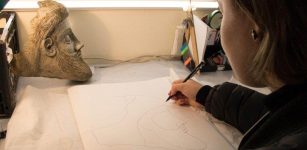 Fragment Of Unique Ancient Greek Terracotta Statue Uncovered In Underwater Diggings
Archaeology | Mar 26, 2017
Fragment Of Unique Ancient Greek Terracotta Statue Uncovered In Underwater Diggings
Archaeology | Mar 26, 2017 -
 Ancient Mysteries Of Arizona – Traces Of A Vanished Race And Secrets Of An Underground World
Civilizations | Mar 12, 2019
Ancient Mysteries Of Arizona – Traces Of A Vanished Race And Secrets Of An Underground World
Civilizations | Mar 12, 2019 -
 Humans Were Apex Predators For Two Million Years
Archaeology | Oct 18, 2022
Humans Were Apex Predators For Two Million Years
Archaeology | Oct 18, 2022 -
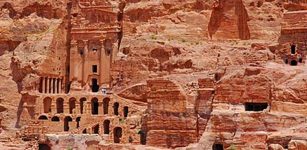 Skilled Nabataeans Celestially Aligned Petra’s Wonderful Architecture
Featured Stories | Mar 6, 2014
Skilled Nabataeans Celestially Aligned Petra’s Wonderful Architecture
Featured Stories | Mar 6, 2014 -
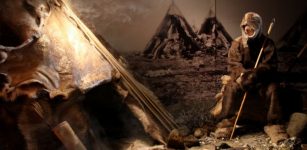 12,000-Year-Old Ice Age Stone Tools Found – Earliest Dated Evidence For Human Activity in Scotland
Archaeology | Oct 10, 2015
12,000-Year-Old Ice Age Stone Tools Found – Earliest Dated Evidence For Human Activity in Scotland
Archaeology | Oct 10, 2015 -
 On This Day In History: Ruler Of Palenque Yohl Ik’nal Was Crowned – On Dec 23, 583
News | Dec 23, 2016
On This Day In History: Ruler Of Palenque Yohl Ik’nal Was Crowned – On Dec 23, 583
News | Dec 23, 2016 -
 Lost Mayan City Hidden Deep In The Peten Jungle Discovered By Expedition Team
Archaeology | Mar 21, 2022
Lost Mayan City Hidden Deep In The Peten Jungle Discovered By Expedition Team
Archaeology | Mar 21, 2022 -
 Los Millares – 5,000-Year-Old Advanced Copper City In Europe
Featured Stories | Mar 24, 2016
Los Millares – 5,000-Year-Old Advanced Copper City In Europe
Featured Stories | Mar 24, 2016 -
 Viking Age Shields From The Gokstad Ship Burial – Re-Examined
Archaeology | Apr 6, 2023
Viking Age Shields From The Gokstad Ship Burial – Re-Examined
Archaeology | Apr 6, 2023 -
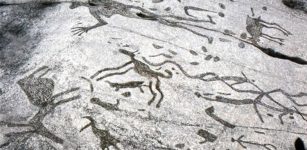 Peterborough Petroglyphs Could Offer Evidence Ancient Celts Visited Canada 2,000 Years Ago
Archaeology | May 27, 2015
Peterborough Petroglyphs Could Offer Evidence Ancient Celts Visited Canada 2,000 Years Ago
Archaeology | May 27, 2015



